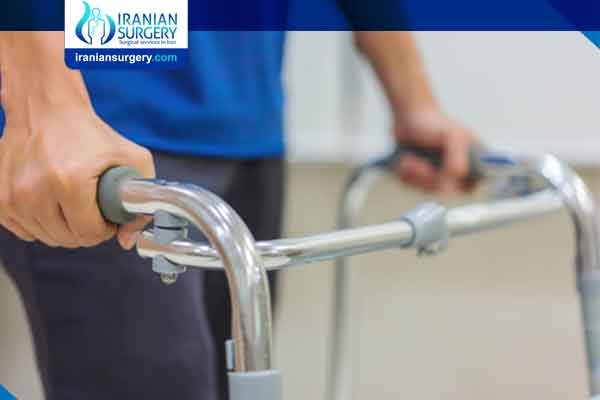Walking after Limb Lengthening Surgery

Can you walk after limb lengthening surgery?
When Can You Walk After Leg Lengthening surgery?
How can i walk after limb lengthening?
can you walk after limb lengthening surgery?
How long does it take to walk after leg lengthening surgery?
Walking after limb lengthening surgery is one of the main concerns of people who are considering having this operation to become taller. We already know that this procedure involves cutting the major bones of the legs, either femurs or tibiae, and distracting these bones over a period of time. In this scenario, these questions comes to mind: “How and when walking after limb lengthening surgery will be possible? How fast can I return to my normal daily life? When can I do sports, play football, run and swim?”
Read more about : Leg lenthenening surgery sucees story
Read more about : Leg lengthening surgery scars
Read more about : Success rate of limb lengthening surgery
Read more about : How long after meniscus surgery can I walk?
Do I need to stay in bed all the time after Limb Lengthening Surgery?
As opposed to what many people think before researching leg lengthening, you don’t need to spend long weeks or months in bed. In fact, it is quite the opposite. Our patients are encouraged to walk, to make at least a few steps with the walker, on the next day after surgery. It might be difficult for some people, but the majority of patients are able to walk a short distance with walker, with assistance from the surgeon, doctor assistant, or physiotherapist.
First days, patients use a walker to assist themselves while walking. They use the walker to go to WC, maybe have a short walk in the hospital corridor. In 1-3 weeks time, most patients move to crutches, as it becomes easier to walk.
Approximately 3 weeks from the surgery date, it might be possible to walk without support. At times, patients may need crutches or single crutch to support themselves. External fixators are usually a source of limitations, so our patients shouldn’t expect walking just like pre-surgery times. However, they will still be able to do the most necessary daily things, and take care of themselves if they are going through this procedure alone, without a caretaker.
In 1 month or so after the surgery, physiotherapy sessions begin. This is necessary in order to keep patient’s mobility and reduce the tension in leg muscles. Those who put effort into exercises and get proper physio usually keep their ability of walking throughout the process of bone lengthening.
When our patients reach 5-7 cm height gain, it becomes difficult to walk, due to increased tension in legs, caused by the distraction of bones. At this point, patients may need crutches and even walker for some time again, but things become easier after bone distraction process is finished and external fixators are removed.
We understand that most of you wonder when it is possible to walk normally and without support or visible limping. It will be possible in 4-5 months time after surgery has been performed. Usually after the end of distraction phase, it takes another 1-2 months to improve the walking ability up to the point at which other people wouldn’t notice any oddness in your walking manner.
Read more about : Leg lengthening surgery pros and cons
Walking after limb lengthening surgery in various methods
The info provided above mainly applies for LON method, which is the most common surgery method that our patients choose. It is true for Holyfix and Stryde methods as well. But in Holyfix method, the difference is in removal of devices. In this method, external fixators are removed only when bones have fully consolidated. This takes 9-12 months. Due to the fact that the external devices are kept for a longer time, this means walking might be more limited in this period. Holyfix patients are usually able to walk without support, but fixators limit the leg movements to a certain extent. There may be occasional pain due to that.
In Stryde method, there are no external fixators, only internal nails are used. The fixators are slightly different from those used in Precice 2.2 method, in sense that they are fully weight bearing. This enables patients to be able to walk more easily, with less pain and limitations. For this reason, walking ability is restored earlier, compared to other mentioned methods.
Precice 2.2 nails aren’t designed to fully support the weight of patients. Till the end of the bone distraction process, the patients may need to use wheelchair. However, if the surgeon considers it possible, a nail with larger diameter can be applied, which will make it possible to walk with a walker. In Precice procedure, walking after limb lengthening surgery should be with great caution, without overloading the nails and always using a walker to support the body. Otherwise the intramedullary nails can be damaged which will need to be replaced with additional surgery. After the end of distraction phase, patients are allowed to walk once again.
Read more about : Is there any age limit for Limb Lengthening Surgery?
Read more about : Limb Lengthening Surgery-External Fixators
Read more about : Lengthening over Nails (LON)
Read more about : Is there any age limit for limb lengthening surgery?
Read more about : Is Limb Lengthening Surgery Safe?
Read more about : Does limb lengthening hurt?
Read more about : How Many Centimeters Can I Get after Leg Lengthening Surgery?
Read more about : Limb lengthening recovery time
Read more about : Internal limb lengthening surgery

